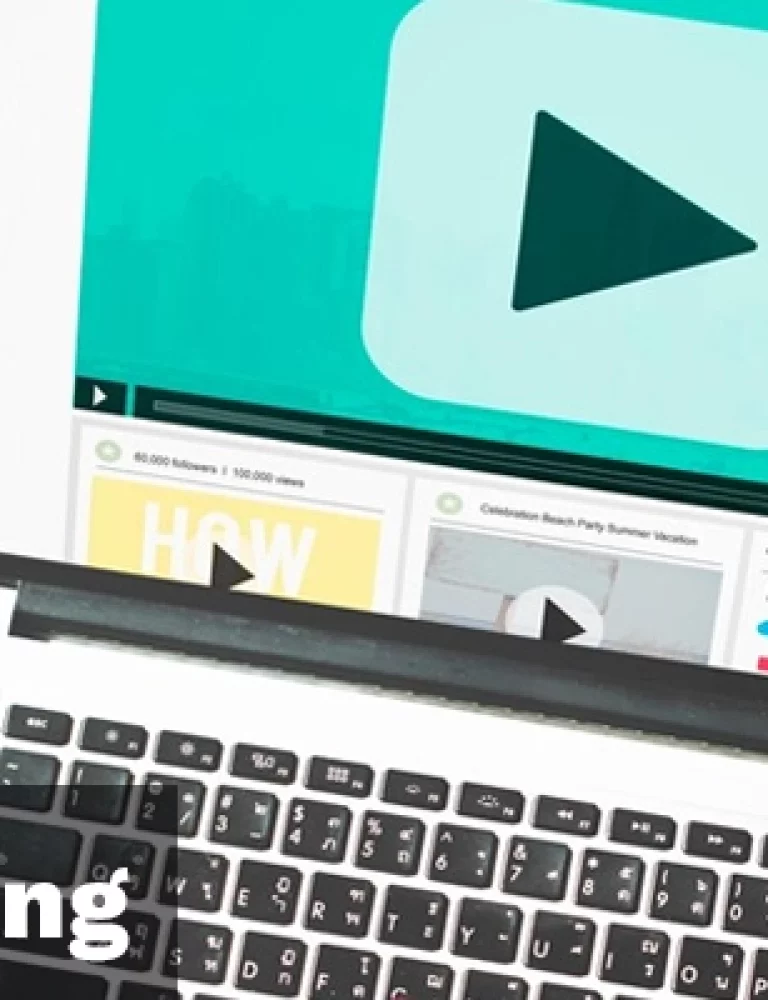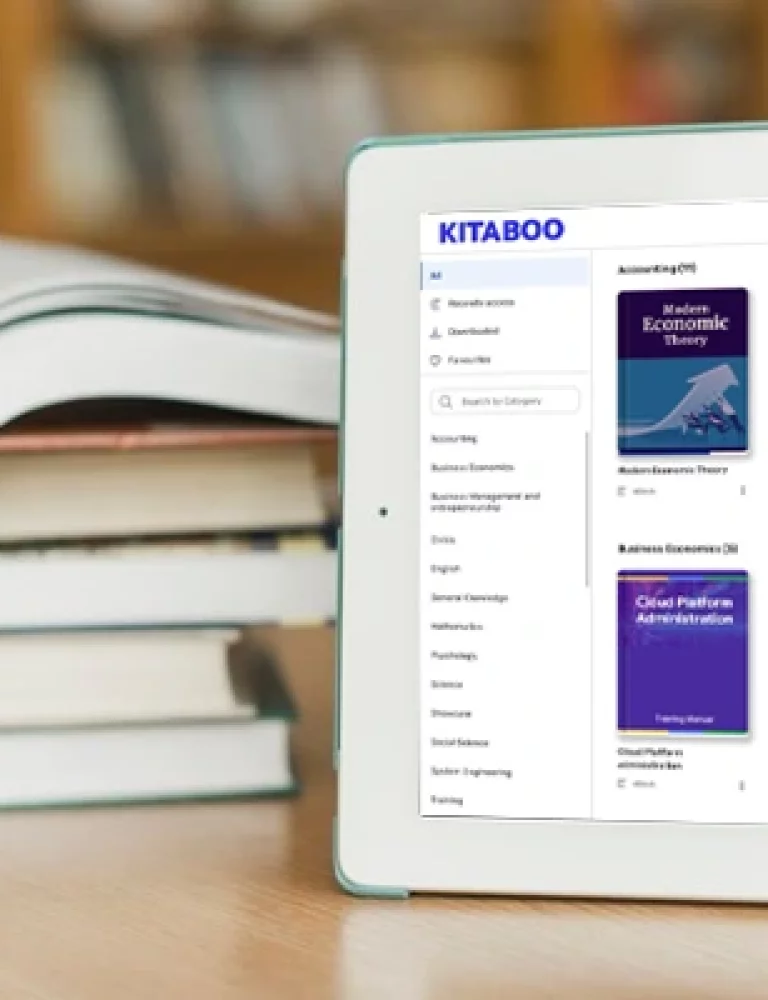In recent years, the global educational landscape has been witnessing a profound shift towards online and hybrid learning models. This transformation was significantly accelerated by the onset of the pandemic, which forced educators and institutions to adapt to remote and digital learning environments rapidly.
To put this shift into perspective, consider that in 2022, the global e-learning market was valued at approximately $399.3 billion and is anticipated to grow at a CAGR of 14% between 2023 and 2032.
As education continues to undergo this transformative shift, the need for scalable educational resource development becomes increasingly critical. Digital textbook platforms have emerged as pivotal tools in this pursuit, revolutionizing the way educators create and deliver learning materials.
In this article, we will explore the challenges that educators and institutions face in addressing the diverse and evolving needs of learners and provide a set of compelling strategies to maximize impact.
Table of Contents
I. Challenges in Educational Resources Development
- Diverse Learner Needs
- Content Quality Assurance
- Cost and Resource Constraints
- Accessibility and Inclusivity
II. Strategies for Maximizing Impact on Educational Resources Development
- Embrace Digital Technology
- Foster Collaboration
- Prioritize Interactivity
- Implement Data Analytics
- Personalize Learning
- Embrace Open Educational Resources (OER)
- Stay Current with Trends
III. The Takeaway
Challenges in Educational Resources Development
Developing educational resources that are not only effective but also scalable is a complex endeavor. Educational institutions and professionals often grapple with several challenges in this process.
Diverse Learner Needs
One of the primary challenges in educational resource development is catering to the diverse needs of learners.
Students vary in terms of learning styles, abilities, and backgrounds. Meeting these diverse needs while maintaining a high standard of education is a daunting task.
Content Quality Assurance
Ensuring that educational resources are of the highest quality is essential. Poorly developed materials can hinder the learning process and negatively impact student outcomes.
Quality assurance in educational resource development extends beyond mere accuracy. It encompasses the relevancy of the content, the effectiveness of pedagogical approaches, and the engagement value of the materials.
Cost and Resource Constraints
Many educational institutions face budgetary constraints that limit their ability to develop high-quality resources. Lack of funds and resources can significantly impede the development of effective educational materials.
Accessibility and Inclusivity
In the digital era, the “digital divide” is a pressing concern. This is the case because all students do not have equitable access to technology and high-speed internet. This limits their effective engagement with digital educational resources.
Additionally, students with disabilities require specialized accommodations. This includes screen readers and assistive technologies, posing intricate challenges in resource development that necessitate a thorough grasp of accessibility guidelines and universal design principles.
Strategies for Maximizing Impact on Educational Resources Development
To address the challenges mentioned above and achieve scalable educational resource development, educators and institutions must adopt effective strategies.
Below, we outline a set of strategies that can empower educators and institutions to maximize their impact while developing educational resources:
1. Embrace Digital Technology
The integration of digital technology is paramount for maximizing impact in educational resource development.
Digital textbook platforms like KITABOO provide a dynamic environment where educators can create, distribute, and update educational materials efficiently. This enhances the scalability of resources and allows students to access content from virtually anywhere.
By embracing digital technology, educators can cater to diverse learner needs, ensuring that students with varying abilities and preferences can engage with materials in a manner that suits them best.
KITABOO’s digital features, such as interactive elements and customization options, align with this strategy, facilitating the creation of resources that are engaging, adaptable, and accessible.
2. Foster Collaboration
Collaboration among educators, content creators, and subject matter experts is fundamental to the development of comprehensive and diverse educational resources.
Through KITABOO’s cloud-based platform, this collaborative effort gains momentum. The platform ensures real-time collaboration, meticulous version control, and seamless content sharing, effectively streamlining the development process.
In doing so, it not only fosters a tapestry of diverse perspectives but also accelerates the creation of resources with unmatched efficiency.
3. Prioritize Interactivity
Interactivity is a key strategy to engage students and enhance learning outcomes. Incorporating interactive elements like quizzes, videos, simulations, and interactive exercises in educational materials captures students’ attention and promotes active learning.
KITABOO’s interactive tools empower educators to infuse their content with engaging elements such as images, data, and videos, making learning dynamic and enjoyable.
These interactive features cater to diverse learner preferences, allowing students to explore topics in ways that resonate with their individual styles of learning.
4. Implement Data Analytics
Data analytics play a pivotal role in educational resources development. Educators can utilize analytics to gain insights into student performance and preferences.
Through analytics, educators can refine and adapt their content to meet specific needs, thereby addressing the challenge of diverse learner requirements.
Digital textbook platforms often provide real-time learning analytics that can guide the ongoing improvement and customization of educational resources.
By collecting and analyzing data on student engagement, comprehension, and progress, educators can make data-driven decisions, ultimately maximizing the impact of their materials.
5. Personalize Learning
Personalization is a powerful strategy in educational resource development. By tailoring content to individual learner needs, educators can ensure that students receive materials that align with their abilities and interests.
Digital textbook platforms facilitate personalized learning, allowing educators to provide content that caters to each student’s unique requirements.
Personalization is a direct response to the challenge of catering to diverse learner needs, as it enables educators to adapt resources in real-time based on individual progress and learning styles.
6. Embrace Open Educational Resources (OER)
Open Educational Resources (OER) are freely available materials that can be used, adapted, and shared by educators and institutions.
Embracing OER is a strategy that not only reduces costs but also enhances access to quality materials, thus addressing the challenge of cost and resource constraints.
KITABOO supports the integration of OER, allowing educators to access a wide range of materials that can be seamlessly integrated into their content.
By leveraging OER, educators can provide students with a wealth of additional resources, enriching the educational experience without incurring additional costs.
7. Stay Current with Trends
Education is a dynamic field, with trends in pedagogy, technology, and curriculum continuously evolving. To maximize impact, educators and institutions must remain current with the latest developments in the field.
Digital textbook platforms provide access to a wealth of up-to-date resources and tools that align with contemporary educational practices.
This enables educators to create educational materials that remain relevant and effective even as the educational landscape evolves.
The Takeaway
Educational resource development is a complex and ever-evolving field, and addressing the challenges while maximizing impact is crucial for educators and institutions worldwide.
In this pursuit, KITABOO provides a comprehensive solution that empowers educators to create high-quality, scalable educational resources. It offers collaborative tools, real-time updates, and diverse resources that empower educators to create and disseminate high-quality content.
By embracing technology, fostering collaboration, and staying current with trends, it helps meet the challenges head-on, ensuring that all students have equitable access to superior educational resources.
In the digital age, KITABOO and similar platforms are shaping the future of education by enabling educators to rise to the occasion and deliver truly exceptional learning experiences.
To learn more, connect with us now!
To know more, write to us at KITABOO@hurix.com.
Suggested Reads:
Discover How An Ebook Conversion, Publishing & Distribution Platform Can Help You
Kitaboo is a cloud-based content platform to create-publish & securely distribute interactive mobile-ready ebooks.
You May Also Like








